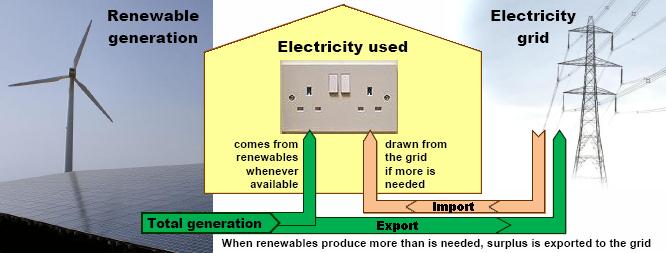If you have solar panels or you re considering buying some then you ve probably heard of something called a feed in tariff fit otherwise known as a buy back rate or simply a solar tariff but what does this mean.
Solar panel feed in tariff explained.
The feed in tariff fit pays around 80 000 homes for generating renewable electricity mainly from solar photovoltaic pv panels.
Net metering is a solar incentive that requires your utility to purchase excess solar electricity that your solar panels produce at the full retail value of electricity.
Feed in tariff payments are guaranteed for 20 years and will increase in line with.
Find out how to apply.
A solar feed in tariff is a credit you receive for excess solar power that your system generates and exports back to the grid feed in tariffs are typically between 9 15c per kilowatt hour kwh but the rates vary in each state and are ultimately determined by your electricity retailer.
A feed in tariff pays you for excess electricity generated by your solar pv system and not used in your home.
Income is earned for every unit of electricity that a solar pv system generates regardless of whether the power is used by the owners or not.
Annual solar pv electricity production.
When solar panels generate more energy than needed the excess energy is sent back to the main grid for others to use.
In other words when your solar panels produce more electricity than your home needs that excess power will be sent to the power grid.
It closed to new applicants in march 2019.
Read on to find out if you can benefit financially from installing renewable technology at home without the feed in tariff.
Annual feed in tariff income for electricity generated 13 39p x 3840kwh please note.
Feed in tariffs are the rates solar panels owners receive for one unit of power kwh sent to the gird.
Feed in tariffs are paid by electricity retailers and aim to encourage to go solar.
Under a net feed in tariff a fee is paid for any solar energy that goes back into the grid from your house.










